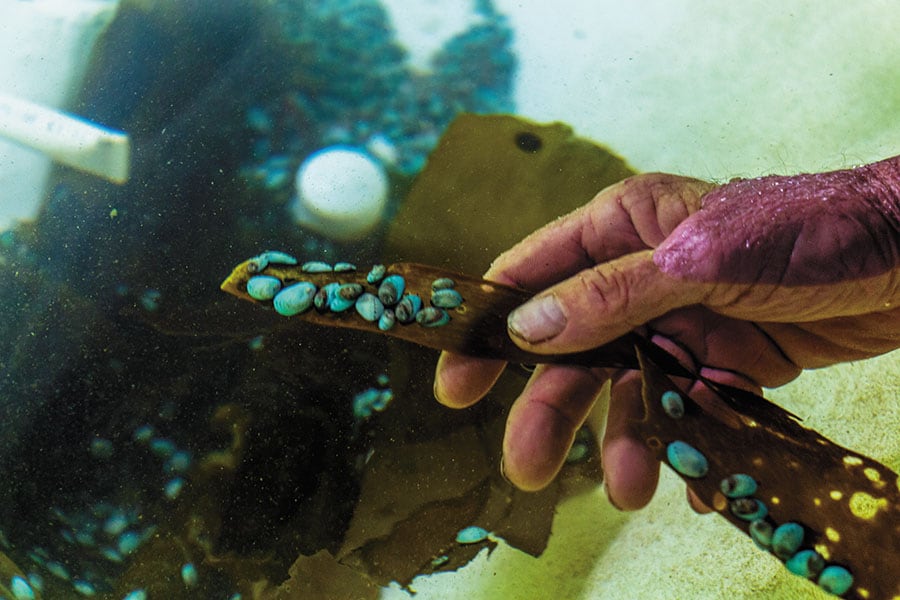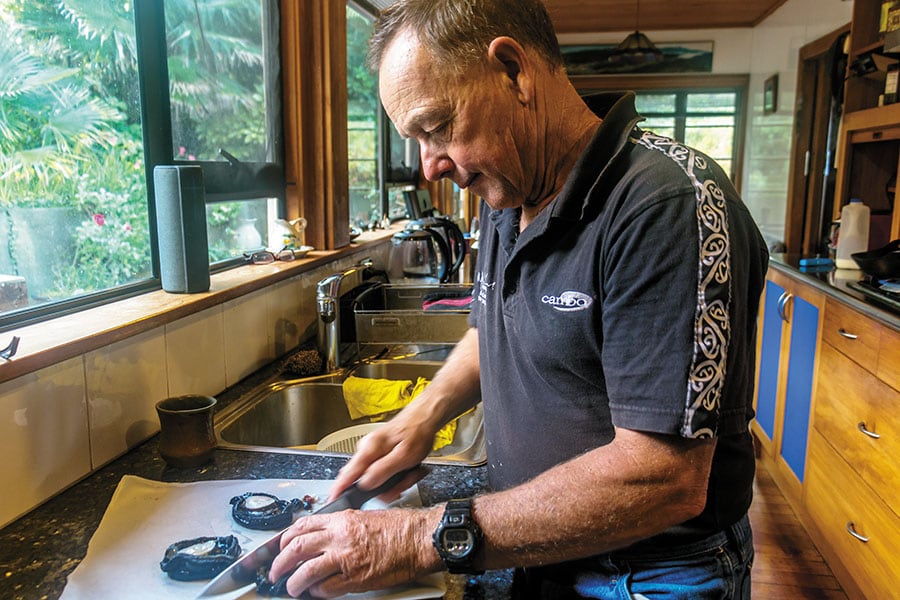
New Zealand's paua: Growing a rainbow
Farming the pearl is a work of patience and skill

The colours in the paua pearl aren’t found in any other pearl
I watch Mike Radon in action. He holds the shell in one hand, and a gentle push with a blunt tool is enough for the mollusc to be pried from the shell. It is fascinating to watch the gastropod called abalone—or ‘paua’ as the indigenous Maori tribe of New Zealand call it—move outside its shell.
Unlike oysters, which are bivalves (with two shells hinged at the centre), the paua are single-shelled univalve saltwater mollusc. As they glide along sea tides, they latch on to rocks with their muscular foot. A Maori’s strength is often compared to the tenacious grip of a paua. Belonging to the Haliotidae family, three species of paua are commonly found in New Zealand—Haliotis iris, Haliotis australis and Haliotis virginea. Unlike the abalone found across the world, the New Zealand Iris (iris is rainbow in Latin) endemic to the cold waters of the country stands apart, and is distinguished by a riot of colours in its shells. The opalescent colours in the mother-of-pearl of the paua caused due to the refraction of light through its layers of calcium carbonate aren’t found in any other mollusc.
I am at Radon’s Arapawa Homestead, a farm in the picturesque Marlborough Sounds at the northern end of the South Island of New Zealand. The Sounds are nature’s creation during the last ice age about 10,000 years ago, when rising sea levels drowned the valleys in the region. The expanse is a delight to soak in, with numerous coves, bays and islands.
Radon, 68, an American, set up the 700-acre farm at Tory Channel with his Kiwi wife Antonia in 1993, and became a paua farmer in 1998; today, he is one of only a handful of farmers involved in paua pearl culture in New Zealand. Inside their closed paua farm shed, tubs of paua are stacked on racks, with a bucket above every tub. Water pumped from the sea is poured into the tub automatically from the bucket every 10 minutes, thus replenishing the water and imitating a marine environment for the paua.
(This story appears in the 30 November, -0001 issue of Forbes India. To visit our Archives, click here.)






